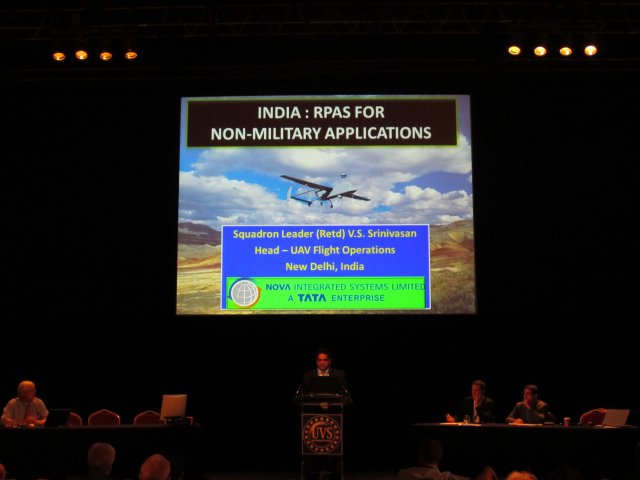 Squadron Leader VS Srinivasan retired from the Flying(Pilot) branch of the Indian Air Force on 31st March 2010, after a challenging tenure of 11 years and 3 months.Born on 27th March 1976, Srinivasan is an alumnus of the prestigious National Defence Academy. His passion for flying saw him change his branch from Army to Air Force in his 5th semester and he graduated Second in the Order of Merit in December 1997. He completed his flying training at Air Force Academy, Hyderabad and a year later he was commissioned into the Fighter Stream of the Indian Air Force, but it was in the Helicopter stream that he subsequently did most of his 1500 hours of manned flying. In 2005, he was among the select few chosen to form a new Squadron of IAF UAVs at Awantipur near Srinagar and thus began his association with Unmanned Aviation.
Squadron Leader VS Srinivasan retired from the Flying(Pilot) branch of the Indian Air Force on 31st March 2010, after a challenging tenure of 11 years and 3 months.Born on 27th March 1976, Srinivasan is an alumnus of the prestigious National Defence Academy. His passion for flying saw him change his branch from Army to Air Force in his 5th semester and he graduated Second in the Order of Merit in December 1997. He completed his flying training at Air Force Academy, Hyderabad and a year later he was commissioned into the Fighter Stream of the Indian Air Force, but it was in the Helicopter stream that he subsequently did most of his 1500 hours of manned flying. In 2005, he was among the select few chosen to form a new Squadron of IAF UAVs at Awantipur near Srinagar and thus began his association with Unmanned Aviation.
An Internal Pilot and Mission Commander on the Searcher Mk-II and Heron UAVs in the IAF, Srinivasan was actively engaged in flying UAVs in various terrains in support of a variety of roles like surveillance, counter-terrorism, intelligence gathering, and flying in support of special forces operations. Till date he has flown almost 650 hours on the IAI-made Searcher Mk-II and Heron UAVs. He is among a very small group of pilots who can claim to have the unique experience of having flown fighter aircraft, helicopters and UAVs.
After leaving the IAF, he has since joined NOVA Integrated Systems Limited, a TATA Group enterprise dealing in Defence Systems like UAVs, Missiles, Radars, Electro-optic systems etc.. In his present role as Head-UAV Flight Operations based at New Delhi, Srinivasan is in charge of all matters pertaining to UAV Flight Operations by the company.
ABSTRACT
Historically, UAVs have been mainly employed by defence forces across the world for national security roles. India mirrors the world order when it comes to users of UAVs. Over the next few years, Unmanned Aviation is likely to grow by leaps and bounds in India. In India, UAV applications in non-military roles would primarily be focused on commercial and security ventures. While counter-insurgency, coastal surveillance, EEZ monitoring, homeland security and disaster relief monitoring are seen to be the primary areas of UAV applications, commercial ventures like oil pipelines monitoring, powerlines survey, Digital Elevation Mapping and agricultural survey are a few areas that could generate potential UAV business.
The advantages that UAVs provide can be mainly associated with reduction in time and cost factors, as also increased surveillance footprint. However, before UAV take to the civil skies in India, the regulations have to be in place to ensure smooth and efficient conduct of UAV operations. Air traffic management, segregation of airspaces, sense and avoid capabilities, collision avoidance methodology etc. are some of the issues which need to be addressed forthwith, so that India does not lose out on the capabilities presented by UAVs to the industry.

Hi Srini give me a call when u free. 8447264043 Thanx Shukla
Its my pleasure to inform u that sir , i am much facinated by your works in UAV . Me and my colleagues are working on UAV Quadcopter and its further applications. So i just wanted to know about its future scope and the benefits which we can get from it in regards to our career.And how can we contribute to INDIA ‘ s glory regarding UAV quadcopter.